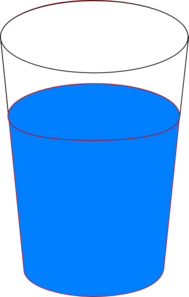"Día de los Muertos" curated by Sofia Villalobos, on display at the Little Fine Arts Library in Fall 2018
Día de los Muertos
Curated by Sofia Villalobos
Marigold Flowers
Marigold Flowers
La Ofrenda:
The Ofrenda dates back to the Aztec Pre-Hispanic Era in Mexico for Dia de los Muertos celebrated every November 1st and 2nd. Ofrendas are shrines built to remember and honor people who have passed away. This is a way to keep the memory of that person alive through the annual tradition of remembering what they do, eat, drink and physically look like. The first component in an ofrenda is the Marigold flower. It is believed that the color and smell attracts spirits; they are even colloquially known as the “flower of the dead.” Candles are also importantly used in ofrendas because they are used as guides to this world. Four big candles are set, symbolizing the four cardinal points. A water cup is set in the ofrenda because it reflects the purity of the souls. Water is set on the ofrenda altar so the spirits can refresh themselves and continue their journey. Food, bread, alcohol are a gift from Earth and represent generosity of the host. Personal pictures and objects are set on the altar so the spirit of the deceased can remember moments of his/her life; if the spirit is a child toys are displayed.
Water

Water
Personal Objects
Personal Objects
Pan de Muerto
Pan de Muerto
The Festival of Bones/El Festival de las Calaberas
Luis San Vicente
The Festival of Bones/El Festival de las Calaveras
Cinco Puntos Press, 1999
Education Library J394.2 SAN
Sugar Skull
Sugar Skull
The Sugar Skull:
If you have ever attended a Dia de los Muertos event, or seen an ofrenda, then you might have come across a decorated white molded skull-- And while you might be picturing yourself eating a delicious treat, these are not sweets you’d eat in Mexico. During the celebration of Dia de los Muertos, sugar skulls are often used to decorate the ofrendas (offerings), and they are exactly what their name describes--skull-shaped sugar. There is a meaning behind these molds and it all dates back to the Spanish Conquest when Spaniards brought new ideas like making decorations out of an easily accessible ingredient: sugar! Traditional sugar skulls are made from a granulated white sugar mixture that is pressed into special skull molds and then decorated with icing, feathers, colored foil and more. While the ingredients of sugar skulls are edible, the skulls are generally used for decorative purposes. Skulls have the name of the deceased written on the forehead and are decorated with dots, stripes, swirls of icing, and your imagination to enhance features. Today, many versions of the sugar skull exist not only different in sizes, but there are coffins and skulls made of chocolate (these you can eat!) where the valuable meaning remains the same.
Candles
Candles
Illustrated books about the holiday:
Dia de los Muertos
Roseanne Greenfield Thong
Dia de los Muertos
Albert Whitman & Company, 2015
Education Library JE THO
Clatter Bash! A Day of the Dead Celebration
Richard Keep
Clatter Bash! A Day of the Dead Celebration
PEACHTREE PUBLISHERS, 2004
Education Library JE KEE

